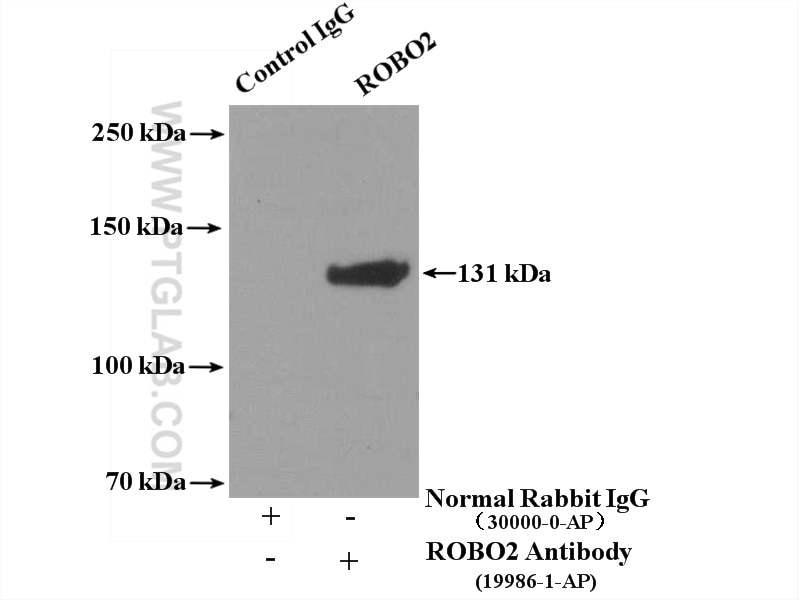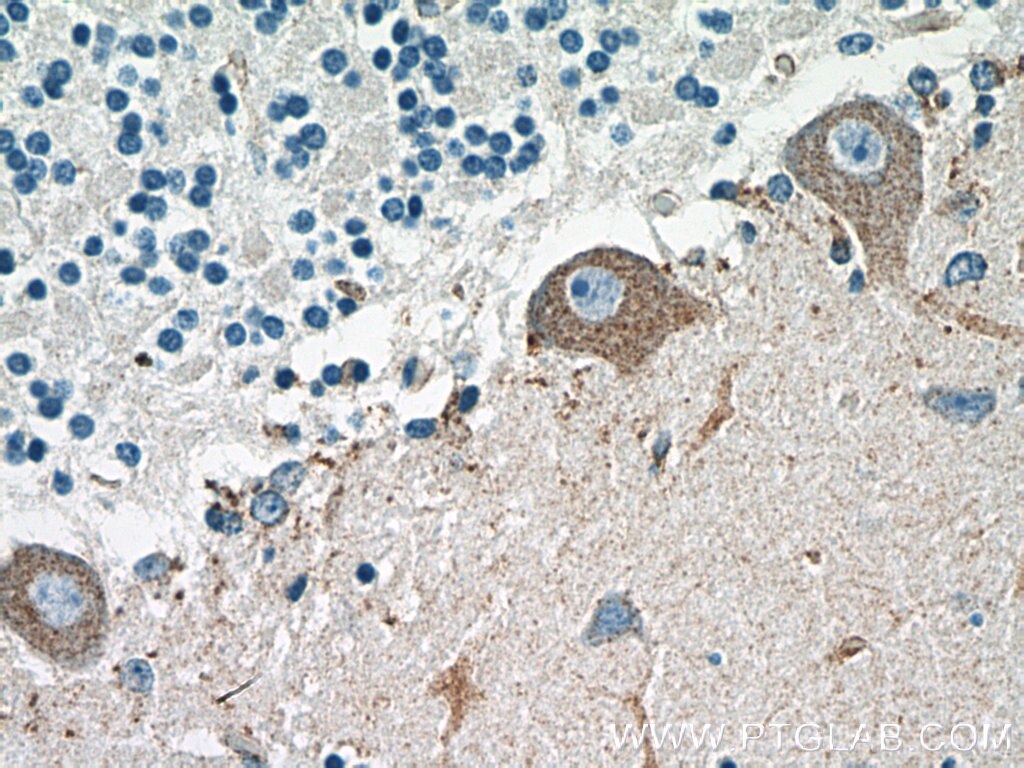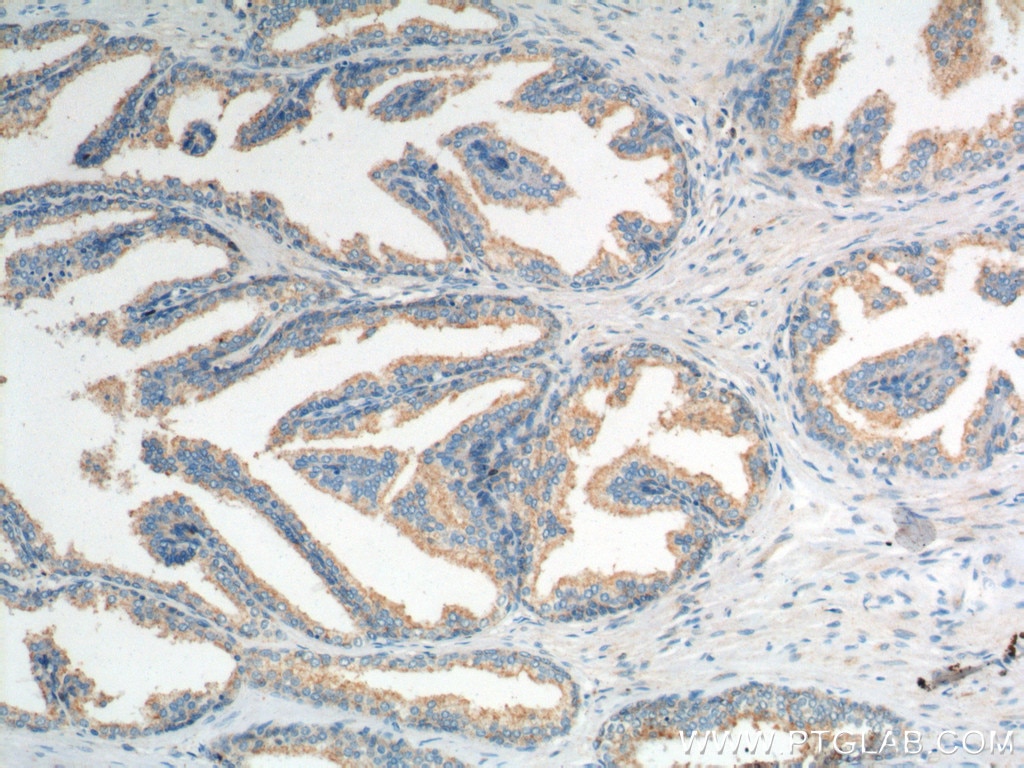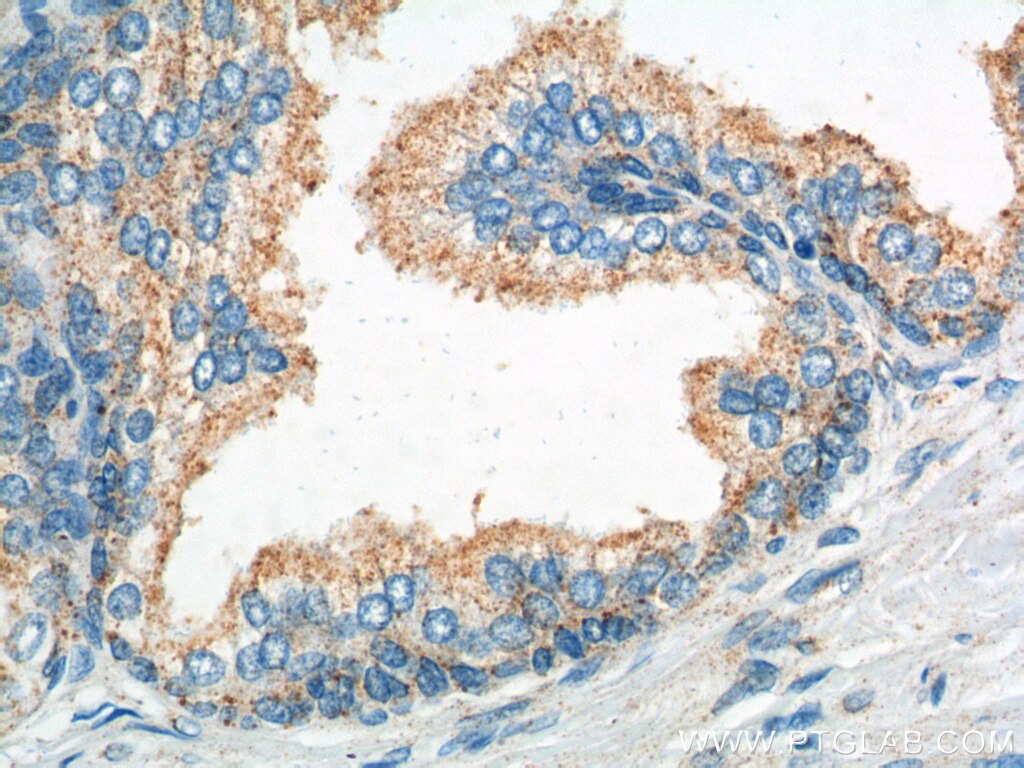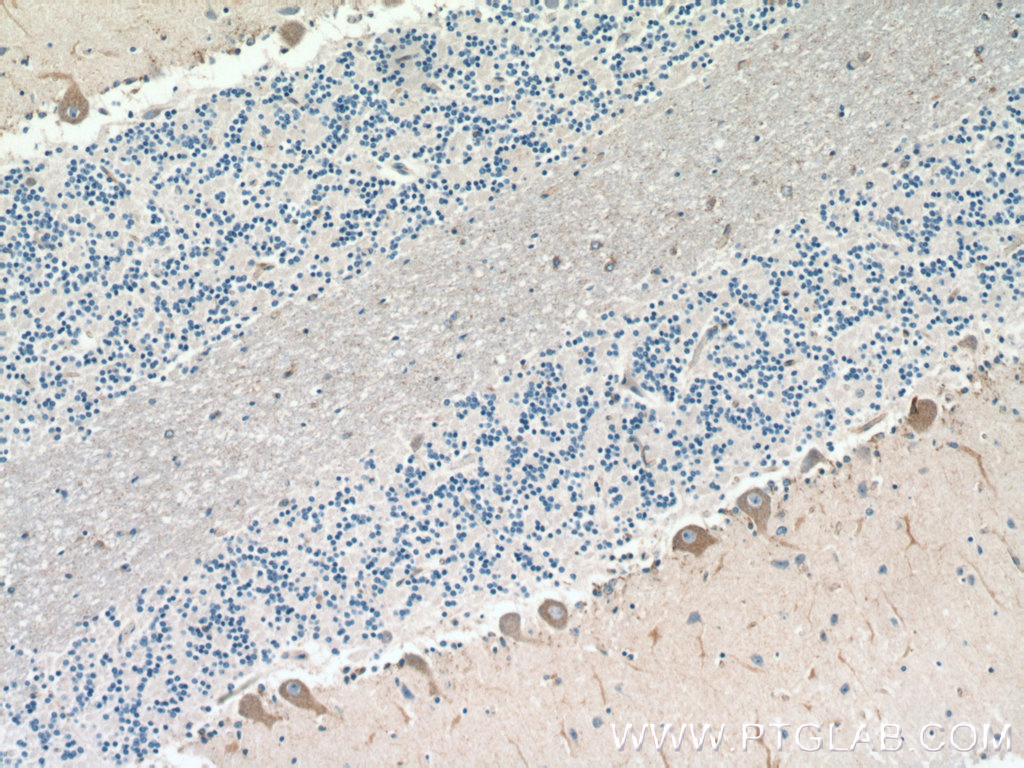Tested Applications
| Positive IP detected in | SH-SY5Y cells |
| Positive IHC detected in | human cerebellum tissue, human prostate hyperplasia tissue Note: suggested antigen retrieval with TE buffer pH 9.0; (*) Alternatively, antigen retrieval may be performed with citrate buffer pH 6.0 |
Recommended dilution
| Application | Dilution |
|---|---|
| Immunoprecipitation (IP) | IP : 0.5-4.0 ug for 1.0-3.0 mg of total protein lysate |
| Immunohistochemistry (IHC) | IHC : 1:50-1:500 |
| It is recommended that this reagent should be titrated in each testing system to obtain optimal results. | |
| Sample-dependent, Check data in validation data gallery. | |
Product Information
19986-1-AP targets ROBO2 in IP, IHC, ELISA applications and shows reactivity with human samples.
| Tested Reactivity | human |
| Host / Isotype | Rabbit / IgG |
| Class | Polyclonal |
| Type | Antibody |
| Immunogen | Peptide Predict reactive species |
| Full Name | roundabout, axon guidance receptor, homolog 2 (Drosophila) |
| Calculated Molecular Weight | 151 kDa |
| GenBank Accession Number | NM_002942 |
| Gene Symbol | ROBO2 |
| Gene ID (NCBI) | 6092 |
| Conjugate | Unconjugated |
| Form | Liquid |
| Purification Method | Antigen affinity purification |
| UNIPROT ID | Q9HCK4 |
| Storage Buffer | PBS with 0.02% sodium azide and 50% glycerol , pH 7.3 |
| Storage Conditions | Store at -20°C. Stable for one year after shipment. Aliquoting is unnecessary for -20oC storage. 20ul sizes contain 0.1% BSA. |
Background Information
ROBO2, also named as KIAA1568, belongs to the immunoglobulin superfamily and ROBO family. ROBO2 is a receptor for SLIT2, and probably SLIT1, which are thought to act as molecular guidance cue in cellular migration, including axonal navigation at the ventral midline of the neural tube and projection of axons to different regions during neuronal development. Defects in ROBO2 are the cause of vesicoureteral reflux type 2 (VUR2). A chromosomal aberration involving ROBO2 is a cause of multiple congenital abnormalities, including severe bilateral VUR with ureterovesical junction defects. The antibody recognizes the C-term of ROBO.
